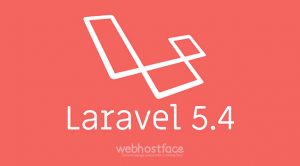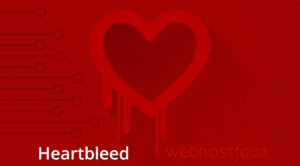You might feel overwhelmed at times when working with more advanced web hosting plans. This is where a good web hosting control panel can make a significant difference. It not only simplifies but also unifies command and control over many aspects of your hosting account.
The Web Hosting Control Panel Explained
A web hosting control panel is an application that provides an interface for you to control and manage your website, web hosting account, email, and more. Simply put, it helps you manage almost anything on your web server, via one easy interface.
Since this is the most visible part of a web hosting plan, its capabilities and functions will largely influence your user experience with a web host. Most web hosting plans will come with a control panel included – sometimes even offering a choice between a few brands.
The web hosting control panel eases administrative tasks the same way a website builder eases building websites.
Why the Need for a Web Hosting Control Panel
The answer is simple – a web hosting control panel makes web server management easier.
Although you can access your web hosting account and server via direct-command tools like Secure Shell (SSH), you’ll soon realize that this is more cumbersome. Without a web hosting control panel, you have to learn – and remember – the commands and syntax of each operating system you use.
The configuration of many common web server applications may also have to be done manually. With a control panel, you’ll find it much easier to navigate a graphical interface and work gets done faster.
For example, when you want to change DNS records manually on a Linux-based web hosting plan, you will need to find and edit a particular file. With a web hosting control panel, you can just click an icon to access the configuration screen.
Additionally, using a control panel helps to potentially reduce server configuration errors. When you make a change in the control panel, you are less likely to make a mistake than if you used the command lines directly.
What Web Hosting Control Panels Can Do
Although various brands of control panels organize tools in their unique way and offer slightly different approaches to managing your web server, they typically accomplish many of the same tasks.
This generally includes:
Account Administration
This involves typical account management tasks which include your billing profile, plan renewal, updating of your password, and others. You have to make sure that your software version is regularly updated for security purposes, as payment is handled by this portion.
Domain Management
Although the tasks here are not frequently done, they are one of the more complex yet crucial things you have to do. So, it is best you understand how your control panel handles this part. Activities under this area include:
- DNS editing
- Domain forwarding
- Subdomain management
And more.
One-Click Installation
If your web host provides this feature, you’ll be able to install most popular web applications via a one-click installer. This makes life much easier as all you need to do is look up the product you want and click ‘Install’. The installer will handle the rest.
For example, you want to install WordPress. With this one-click installer, you will not need to manually download a copy of the WordPress, then upload it via FTP to your website’s server. This saves time and is more convenient.
Email Management
Your control panel helps to reduce hefty administrative tasks related to your email. You’ll be able to:
- Set up mail accounts
- Set up email forwarders
- Set up email spam filters
- Manage email accounts
- Delete email accounts
File Management
This function is common to most control panels but can be labeled differently. Your control panel makes your file management tasks much easier, without the need for an FTP client. They allow file modifications via a browser-based drag-and-drop interface.
Database Management
In all web hosting, you’ll need a database to manage your data. Your control panel helps you manage your database. Most web hosting packages come with MySQL databases and in most cases, this is sufficient.
Your control panel should allow you handle things like:
- Database additions and modifications
- Database maintenance
- Database Users
Backups
Your control panel is where you should go to create backups and access them. You can also restore a backup. Almost all control panels come with a built-in file backup utility that runs regularly. Having backups is a good practice as you never know when you may find having one handy in future.
Choosing the Right Web Hosting Control Panel
Typically speaking, there’s no real right or wrong choice in this. There are some who are happy to just get the job done while other more advanced users may want specific things which they can only get from a particular control panel.
Many users may be under the influence of the masses and join the debate of Plesk vs cPanel. The reality though, is that there are many other strong options besides these two. If you’re lucky enough to be able to choose your web hosting control panel, here are some of the best ones around:
cPanel/WHM

cPanel is the industry leader when it comes to control panels for web servers. It is most popularly used for Unix-based web servers, such as CentOS, CloudLinux, RHEL 7, Amazon Linux and FreeBSD.
Being in the market since 1996, cPanel offers tons of features along with years of documentation and discussions available to help you.
Through cPanel, your applications and tools are categorized into easy-to-find groups, namely Files, Databases and Software. This makes the interface clearer and easier to use. Additionally, icons in each group can be moved around via drag and drop.
The functionality is typically split into:
- cPanel – an interface for you to manage your hosting account
- Web Host Manager (WHM) – a web server administration interface used by the web hosting provider
While cPanel is full-featured and popularly used, some of its features are not organized in the most intuitive manner. Its extensive interface can also be difficult for inexperienced users.
Plesk

Although cPanel is the most widely used web hosting control panel, Plesk comes in a close second. Newer than cPanel, Plesk came about in 2001. If you are running a Windows Server, utilizing Plesk may be one of the best options available. Plesk is the primary control panel on Windows-based servers, although it has Linux versions as well.
Plesk supports Debian, CentOS, FreeBSD, Ubuntu, SUSE, Red Hat Linux, Cloud Linux, Amazon Linux, Virtuozzo Linux, Windows Server 2008 R2 SP, Windows Server 2016, and Windows Server 2019. Resembling the Windows interface, eases entry for those familiar with this operating system.
Plesk offers an easy-to-use interface along with the usual features you’d look for in a web server control panel; managing DNS entries, email management, IP address allocations to file management, FTP user creation and more. More than 100 Plesk extensions allow you to easily add features and also integrate with third-party tools.
Unlike cPanel, Plesk is generally considered to have a better and more organized intuitive interface. In general, Plesk offers everything cPanel does and at a cheaper price.
sPanel

Although SPanel is relatively limited in distribution it comes up strongly thanks to one very distinct characteristic. Due to it being free and 100% cPanel compatible, SPanel offers users a unique opportunity to migrate away and avoid increasing cPanel licensing fees.
It is also a great control panel for first-time users with a neat user interface. You’ll find that each section is self-explanatory and intuitive. cPanel is known to run best with Apache but SPanel is considered by some as being more versatile.
It supports Apache, Nginx, LiteSpeed Enterprise and OpenLiteSpeed web servers with the last two being claimed as the fastest in the world.
An all-in-one solution, SPanel provides a single interface, through which you’ll have control over your entire account, from email management to handling DNS configuration matters and others. Also, there are advanced features that are worth highlighting:
- SShield – a real-time cyber security solution. Integrated in SPanel, it is claimed to stop 99.998% of website attacks, at no additional cost.
- SWordPress Manager – a handy utility that helps WordPress users manage their sites; installation, uninstallation, admin tasks, editing, cloning, staging etc.
Webmin

Webmin is a server sysadmin tool for managing servers. It is an open-source web hosting control panel and is complemented by Usermin, that allows user-level server admin tasks. It supports more than 100 Unix flavored Operating Systems (OS).
Like most, it behaves as the interface to the underlying applications on servers, including configuring applications like FTP, SSH, email, web server, databases, and more.
Webmin is module-based, which makes it easy to add new functionality and customize it. Although Webmin supports mainly Unix based systems, it can now support Windows servers as well. Webmin is more popular among smaller hosting providers and resellers.
Although Webmin is overall not as well-organized or intuitive as Plesk, but in terms of features, it is just as capable.
DirectAdmin

Released in 2003, DirectAdmin is a great control panel option with a multilingual interface. It is an open source web hosting control panel, that helps manage websites, email accounts and more. It typically has three default access levels:
- Admin – DNS administration and clustering, IP management, user management, software upgrade, and others.
- Resellers – account and package management, user communication management, system info features.
- Users – file and database management, email administration, FTP management, site backup, and others.
DirectAdmin is deemed to be a highly stable control panel option for Linux users.
Conclusion
As you know now, you’ll benefit from having a control panel to help manage your web hosting accounts. Handling web servers isn’t an easy task if you need to search for and learn command parameters one by one.
Regardless of whichever web hosting option you choose, control panels are a crucial part of your website management, so be sure to pick the option that best fits your needs, both in terms of features and preferences.




